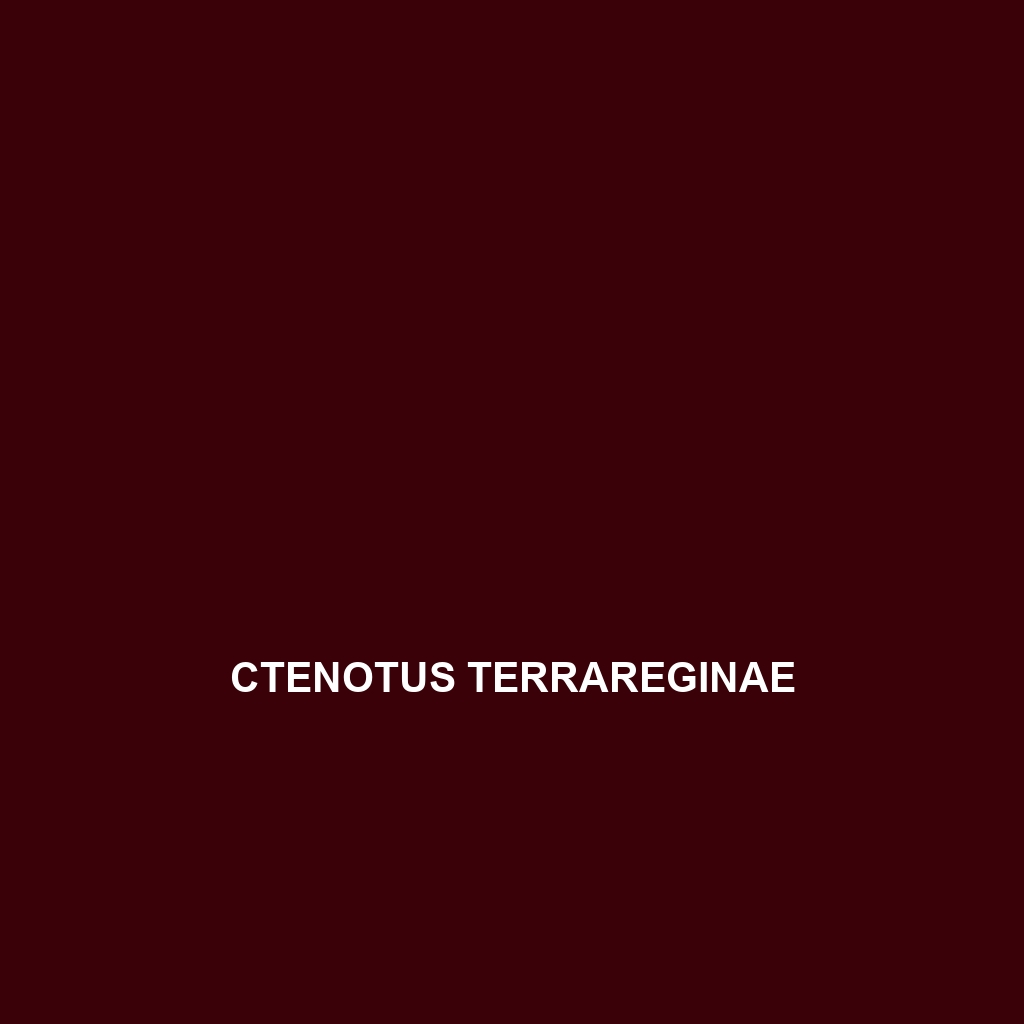-

Ctenotus terrareginae
Ctenotus terrareginae, a small skink native to Australia, thrives in arid regions and is known for its quick movements, distinctive brown or grey coloration with lighter stripes, and insectivorous diet. This resilient species plays a crucial role in its ecosystem by controlling pest populations and serves as prey for larger animals.
-

Ctenotus stuarti
Ctenotus stuarti, or the common Stuart’s skink, is a diurnal lizard native to central Australia’s arid regions, characterized by its elongated body, distinctive coloration, and regenerative tail. An effective predator, this species plays a vital role in controlling local insect populations while being an integral part of its ecosystem.
-

Ctenotus strauchii
The Ctenotus strauchii, or Strauch’s Ctenotus, is a medium-sized skink native to arid regions of Australia, known for its elongated body, striking dark stripes, and agile movements. This insectivorous species plays a vital role in its ecosystem by controlling insect populations and contributing to soil aeration through its burrowing habits.
-

Ctenotus schevilli
Discover the intriguing Ctenotus schevilli, a slender skink native to southeastern Australia, characterized by its brown, tan, and cream striped body that thrives in dry sclerophyll forest and shrubland. This diurnal insectivore plays a crucial role in pest control and faces vulnerabilities due to habitat loss.
-

Ctenotus regius
Discover the royal ctenotus (Ctenotus regius), a slender-bodied lizard native to Australia’s arid regions, known for its striking coloration and quick, agile movements. This fascinating insectivorous species plays a crucial role in its ecosystem, contributing to insect population control while adapting to its harsh environment.
-

Ctenotus quirinus
Discover the Ctenotus quirinus, a diurnal lizard native to eastern and southern Australia, known for its agile movements and distinctive brown and grey coloration. This species thrives in temperate woodlands and shrublands, playing a crucial role in its ecosystem as both a predator of insects and prey for larger animals.
-

Ctenotus quattuordecimlineatus
Discover the fascinating Ctenotus quattuordecimlineatus, or fourteen-lined skink, a diurnal insectivore native to southeastern Australia, recognized for its striking 14 yellow or white stripes and agile movements. This species thrives in open woodlands and grasslands, playing a vital role in controlling insect populations while exhibiting remarkable tail regeneration as a defense mechanism.
-

Ctenotus leae
Ctenotus leae, commonly known as the Leaf Skink, is a slender, agile lizard native to Australia’s arid regions, characterized by its smooth scales, pale stripes, and a diet primarily consisting of small insects. This diurnal skink plays a crucial role in its ecosystem by controlling pest populations and serving as prey for larger predators.
-

Ctenotus iapetus
The Ctenotus iapetus, or Iapetus skink, is a slender, 10 to 15 cm long lizard native to arid regions of southwestern Australia, characterized by its smooth, shiny scales and distinctive coloration. This diurnal insectivore plays a crucial role in its ecosystem by controlling insect populations and serves as prey for larger predators.
Search
Popular Posts
-
Lygosoma corpulentum
Discover the Lygosoma corpulentum, or fat skink, a robust insectivorous lizard native to Southeast Asia’s moist tropical rainforests and varying habitats. With a stocky body, impressive camouflage, and remarkable adaptability, this ovoviviparous species plays a crucial role in maintaining ecological balance.
-
Lygosoma boehmei
Lygosoma boehmei is a slender, nocturnal insectivore found in humid tropical rainforests and savannas of Southeast Asia, exhibiting a smooth, camouflaging texture and remarkable burrowing abilities. This vulnerable species plays a crucial role in its ecosystem by controlling insect populations and serving as prey for larger predators.
-
Lygosoma bampfyldei
Lygosoma bampfyldei, commonly found in tropical and subtropical regions, is a moderately sized lizard measuring 15 to 25 cm, known for its elongated body and glossy, camouflage coloration. This insectivorous species thrives in moist habitats and plays a vital role in maintaining ecological balance by controlling insect populations.
Categories
Tags
animal adaptations (924) animal behavior (5000) animal reproduction (865) behavior (920) biodiversity (7853) conservation (1670) conservation efforts (1778) conservation status (5748) diet (2104) ecological balance (2087) ecological role (1952) ecosystem (1469) ecosystem role (2901) endangered species (2514) habitat (3280) habitat conservation (1136) Habitat Destruction (1421) habitat loss (3385) herpetology (870) insectivorous reptiles (948) IUCN Red List (1971) lizard behavior (881) lizard diet (944) lizard reproduction (1101) nocturnal animals (2754) nocturnal behavior (2592) nocturnal reptiles (1061) physical characteristics (2058) predator-prey relationships (927) reproduction (2890) reptile behavior (1037) reptile conservation (1348) reptile reproduction (1069) rodent species (1325) seed dispersal (2145) Seed Disperser (979) small mammals (1168) snake behavior (952) snake diet (1061) snake reproduction (1129) tropical forests (948) Vulnerable Species (4926) wildlife (2511) wildlife conservation (5355) wildlife protection (1008)



